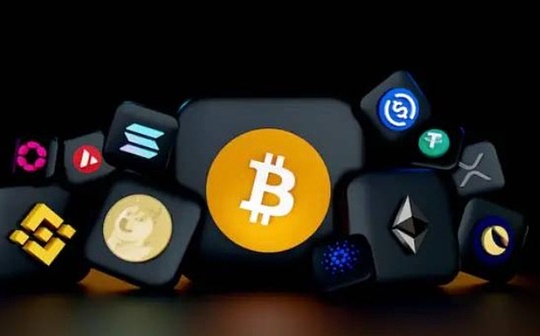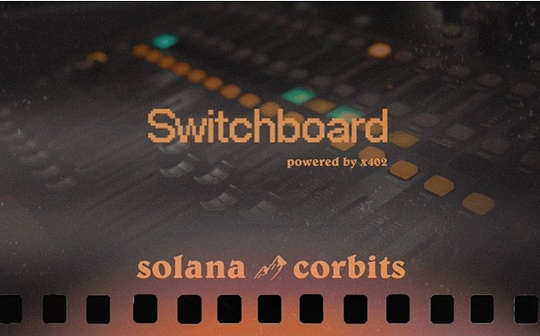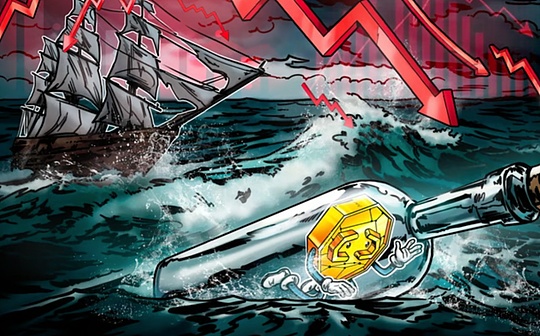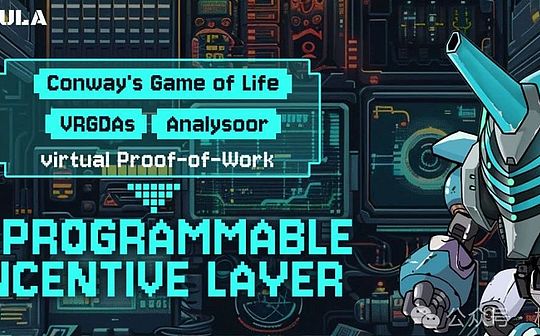
Author: Nickaqiao & Faust, Geek web3
Since ERC-20 assets became popular in the blockchain circle in 2017, Web3 has entered the era of low-threshold for asset issuance. Various project parties are willing to issue custom tokens or NFTs through ID0, IC0 and other methods, and most of them have strong control orInformation opacity is problematic, and RugPull phenomenon occurs frequently. Various sickles use IC0 and ID0 as an excellent way to cut leeks.
To this day, the conventional ID0 and IC0 have fully exposed their flaws in fairness. People have always hoped to have a fair and reliable asset issuance agreement to solve many problems in the new project TGE.Although some creative projects have unilaterally proposed their own “fair economic model”, they are often not promoted in a general way. In the end, most of these economic models have become “concrete cases” rather than “an abstract set of agreements”.
So,What model is a fairer and more reliable asset distribution method?What kind of solution can be used as a general protocol?Cellula, which will be introduced in this article, provides a new perspective to solve the above problems, and they have realized aSimulate the asset distribution layer of POW and use virtual proof of work (vPOW) to “mine” the asset distribution process to simulate BTC to achieve a fairer asset distribution paradigm.
Although the project is considered Gamefi by many, because the in-game rewards it distributes can be set to any type of token,Cellula can theoretically serve as an asset distribution platform with POW effect.It has brought broader prospects and imagination space to the issuance of Web3 assets, and it is not an exaggeration to call it “a social experiment paying tribute to BTC mining.”
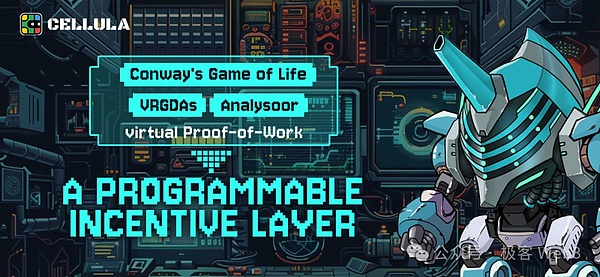
POW and vPOW: Lottery draw with unpredictable results
In fact, whether it is an authentic POW or POS, or the vPOW we are going to talk about today, it is essentially setting up a set of algorithms that output results are unpredictable/unpredictable, and performing a “lottery lottery” by outputting results.BTC miners must construct blocks that meet the restrictions locally and submit them to full nodes in the network to pass consensus before they can get the block yield reward.As for the restriction, it is to make the hash of the constructed block meet special requirements, such as the prefix is 6 0s.
Since the generation results of block Hash are unpredictable/unpredictable, to construct blocks that meet the conditions, you can only constantly change the input parameters of the given algorithm. This process requires violent exhaustion and high quality for miners’ hardware equipment.Require.
In short, BTC mining implements a “lottery lottery” system for online participation by the SHA-256 hashing algorithm through the unpredictability/difficult prediction of the SHA-256 hashing algorithm. This design ensures thatPermissionless in form of participation.
In addition, POW is a fairer asset allocation method. It is much more difficult for project control in mainstream POW public chains to control disks than POS public chains.In many POS public chains or IC0 and ID0 solutions, there are many cases of project parties controlling the disk.
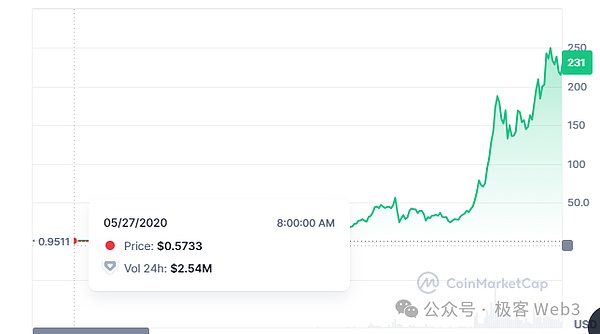
(Under FTX manipulation, Solana soared by 500 times from 2020 to 2021 alone, which is extremely unfriendly to Validator operators who entered the market later)
For example, under the manipulation of FTX and SBF, the Solana currency price soared nearly 1,000 times between 2019 and 2021. Many Solana verification node operators are their early investors, and the cost of obtaining chips is nearly 0, which seriously breaks the distribution of assets.fairness on.Although the project party also has room for control of the disk in POW, the degree is often much lighter than in POS.
The problem is,The POW model is often applied to the underlying public chain rather than the asset issuance layer of DAPP. Can we simulate the effect of POW with a set of on-chain solutions?If possible, you can implement a fairer and more reliable asset distribution agreement than IC0 and ID0, and match it with some game scenarios, you can create some interesting Gamefi (of course, the actual purpose is not limited to games, but also provide other projects with the actual purpose.A fair asset distribution plan).
So the key is,What should we do if we want to simulate the effect of POW at the on-chain asset issuance layer?In the Gamefi project Cellula introduced in this article, by introducing the famous “Conway Life Game” algorithm, computing power is allocated to virtual digital entities on the chain (called “BitLife”).To put it bluntly, it is like letting a group of people breed a cell cluster in their own dish. As time goes by, the more cells survive in the dish, the higher the mining power you get after conversion, the more likely you will get mining rewards..
in short,Cellula replaced the hash calculation of traditional POW with another unpredictable/unpredictable calculation method, replacing the “Work” form in “Proof of Work”.Under Cellula’s idea, the key is how to obtain a dish with more surviving cells (BitLife). Deducing the state changes of BitLife requires computing resources.The essence is to turn the hash algorithm executed by BTC mining into a specific algorithm that deduces Conway’s life game, which is called vPOW (Virtual POW).
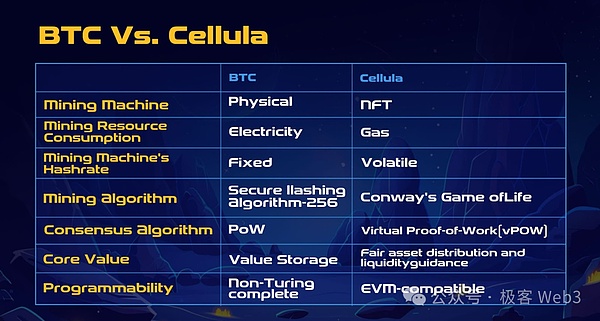
Let’s provide a more in-depth analysis of the mechanism design of vPOW. I have to say that many of the details here are very interesting. It can be said that one of the things Cellula is doing is to simulate the BTC mining machine industry chain through the NFT transaction chain on the chain.Model.
The core of vPOW: Conway Life Game and BitLife
Before interpreting the mechanism design of Cellula, let’s take a lookThe most important core of vPOW – “Conway Life Game”,It can be traced back to the concept of “cell automaton” proposed by von Neumann in 1950, and then mathematician John Conway formally proposed the “Conway Life Game” in 1970, using algorithms to simulate the evolutionary laws of life in nature.
Suppose we have a Petri dish, divide it into a bunch of small squares according to two-dimensional coordinates, and then we make an “initial setting” of the Petri dish, so that some living cells occupy some of the squares, after which the life and death status of these cells will be over time.Evolution gradually presents a cluster of cells with complex morphology (you can imagine how molds reproduce).This is essentially a two-dimensional grid game, and the rules are very simple:
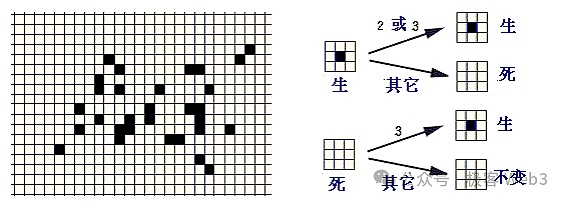
-
Each cell has two states: survival/death, just like a minesweeping game, each cell interacts with the cells on the eight squares around it (as shown in the picture, black is survival and white is death);
-
Assuming that a certain cell survives but less than 2 (0 or 1) of the surrounding 8 cells, the cell enters a dead state;
-
When a certain cell survives and there are 2 or 3 living cells around it, the cell remains alive;
-
When the cell is in a state of survival, when there are more than 3 surviving cells around, the cell enters a state of death (simulating the scene where there are too many lifes and competing for resources);
-
When the current cell is in a dead state, but there are 3 surviving cells around, the cell turns into a living state (simulating cell proliferation)
So it’s very simpleGiven the initial pattern of a cell state in a two-dimensional culture dish, then according to the above rules, the cell state will evolve and iterate over time, producing ever-changing results.You can even simulate the effects of a computer using Conway Life Game.
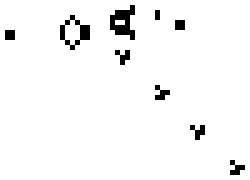
For example, the life/death of each cell in the Petri dish corresponds to the binary 0/1. You can regard the initial state of the cell as an “input parameter”. The life/death of each cell (0 or 1) represents the input data, and thenThe cell state will begin to evolve according to the initial mode, and each round of state changes is equivalent to a step in the calculation process. The state obtained after a period of time can be regarded as “output”.
As long as the appropriate initial mode is arranged, Conway Life Game can output specific results after several generations of evolution.Because the initial mode is ever-changing, its characteristics can be used to simulate the effect of lottery draws.We can set restrictions, and each player randomly selects a batch of initial modes. After 100 generations of evolution, the owner of the petri dish whose output results meet the xx characteristics are eligible to obtain rewards, which is closer to the idea of BTC mining:
“The system first defines which type of output results meet the requirements. Participants input a random initial value to the given algorithm and try to obtain an output result that meets the requirements.”Since there are many initial input parameters to be tried (almost a huge amount), you have to make a lot of effort to win the lottery, which is exactly the logic of the proof of work: miners must put in a certain amount of work to get rewards.
After understanding the basic ideas of Cellulla and Conway’s life game, let’s look at his specific detailed design.Cellula divides the “peptide” mentioned above into 9*9=81 squares. The cells on each square have two states of life/death (corresponding to 0 and 1 in binary). In this way, they are combined according to the arrangement., there are 2^81 initial states of cells in the Petri dish, which is equal to 1 trillion square (basically an astronomical number).
Then, what the player has to do is to select the initial mode (input parameters) of the Petri dish.BitLife acts as the entity of the Petri dish (actually an NFT), containing 81 squares, with one cell placed on each square (there may be two states of life and death, and the empty square is equivalent to dead cells).Then, every 3*3=9 adjacent squares in BitLife forms a BitCell, and each BitLife is spliced by 2~9 BitCells (if the Bitlife you construct is less than 9 Bitcells, some places will be vacant, and by default, they are allIt’s dead cells).
According to the arrangement and combination, BitCell (3*3 squares) has 2^9 initial modes.All players need to do is randomly select multiple BitCells in different modes to combine them to create a BitLife.To put it simply, it is to find an initial pattern for your petri dish.Then as mentioned earlier, there are 2^81 different initial modes, which is an astronomical number.Therefore, there is a lot of room for choice for participants, which is a bit similar to the scenario of using SHA-256 in BTC mining.
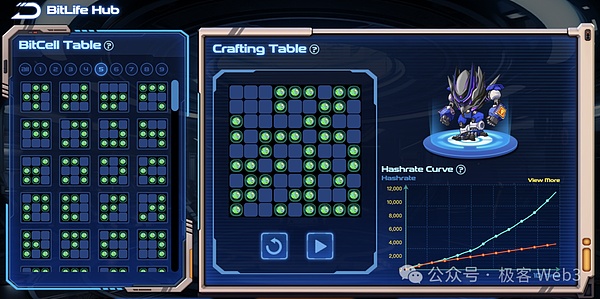
The cell state of BitLife changes as the block height increases.Cellula distributes computing power according to the state of BitLife at different block heights.Given a block height, the more surviving cells it contains, the higher the computing power it has, which is equivalent to creating a virtual mining machine.
Here is a specific example. Cellula participants should exhaust the 2^81 initial modes of BitLife off-chain, predict the evolution status of each mode, and then see if it can meet the requirements of the reward system.Assuming that the current block height is 800, and the system requires that when the block height is 1000, BitLife with the largest number of surviving cells can receive the most rewards, then the participants’ goals will be clear:
When the block height is 800, I want to get the BitLife of a certain mode. When the block height is 1000, I can have more surviving cells than other BitLife.
This is actually the core gameplay of Cellula. Your goal is to construct/buy BitLife from others that is most likely to receive mining rewards.This model is equivalent to allowing ordinary retail investors/high-level retail investors to develop mining machines by themselves, and then you can sell the mining machines you built to others and buy other people’s mining machines to mine.If you want to build your own mining machine, you have to deduce the state evolution of BitLife in different modes off-chain, which will consume computing resources; if you want to buy someone else’s mining machine, it is actually buying Bitlife in different initial modes, you want toYou can judge the future state changes of these BitLife by yourself, so you still have to calculate them off-chain.This is actually a very interesting point in the entire Cellula game design.
After understanding the core mechanism of the game, let’s look at other details: In fact, living cells in BitLife can overflow outside the initial 9*9 grid, and the number of surviving cells can be much larger than 9*9, without boundary restrictions.As shown in the figure, if the number of active cells contained in a BitLife continues to increase, the mining computing power it allocates will also increase. If the initial mode of BitLife is not selected properly, the number of live cells will become smaller and smaller, and the computing power will also beWill get lower and lower.
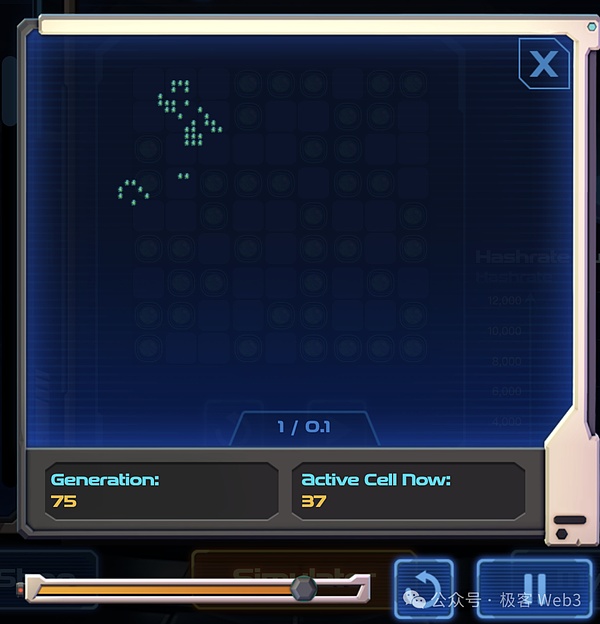

Then,The system will distribute a certain mining reward (called energy points in the game) every 5 minutes, which will be allocated according to the computing power share of each BitLife in the network.
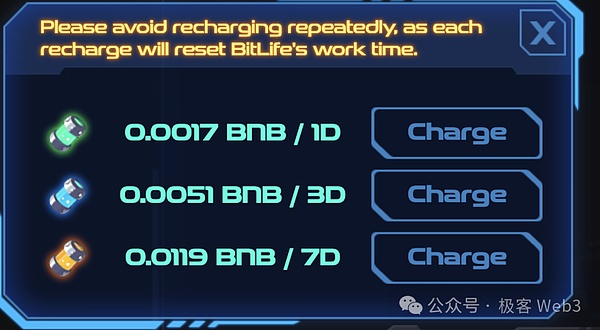
In Cellula, the process of players synthesizing BitLife is a process of “making” new mining machines.We mentioned earlier that the entity of BitLife is an NFT.After BitLife is minted on the chain, it is necessary to perform a “charging” operation before mining can be started.The validity period of a single charge is 1 day, 3 days and 7 days. A small handling fee is required, and charging needs to be continued after it expires.
Here I want to say that in order to encourage users to charge BitLife more, Cellula has set up a “charging lottery” function. You may be selected every time you initiate a charging operation and receive some additional rewards (that is, this reward and mining rewardIndependently open).We will briefly introduce the design of this section in the Analysoor algorithm later.
According to the official rules of Cellula, the casting of BitLife, which currently contains 3*3 Bitcells (that is, 81 small squares), has stopped. Players have cast more than 1.5 million such BitLifes. In the future, new users can use the secondary market.Buy BitLife and do charging mining.According to the official explanation, limited-edition casting is to maintain the stability of the game ecosystem and prevent scientists from unlimited casting of BitLife NFTs, causing the value of mining machines to shrink.
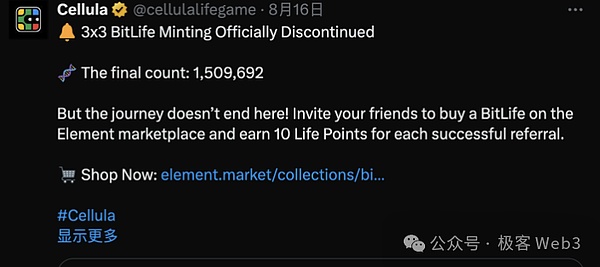
And in the future, Cellula will introduce a role similar to a mining machine manufacturer. This role is based on a licensing system and needs to pledge tokens, publicize sales channels, have a certain community size and influence, etc. These manufacturers will be responsible for minting and selling 4×4.BitLife of BitCell, that is, it contains 16*9=144 small squares.The amount of BitLife that manufacturers can mint will be limited by the amount of tokens they pledge.
Here we roughly explain the core concepts involved in vPOW.The essence of vPOW is a calculation model based on a given rule. Participants can participate in competition through optimization strategies and issue and allocate assets through gamification.Cellula simulates the operating form of the BTC mining machine market and replaces the calculation task form in the proof of work.Since the allocation method of mining computing power can be adjusted dynamically, BitLife in any mode may not be the global optimal. Today, BitLife, which has the largest number of cells, may be surpassed by other BitLife tomorrow, which will lead to complex emergence phenomena and dynamics.Strategy.
Analysoor lottery algorithm and VRGDAs index pricing curve
In the previous article, we mainly interpreted the core mechanisms of Conway Life Game and Cellula. Let’s examine the other designs included in the game.Above we mentioned that Cellula has a charging lottery link, where a random number output algorithm called Analysoor is used.It uses block hash as the input parameter of the random number generator, extracts the winners among the participating chargers in each block, and introduces a lottery system.
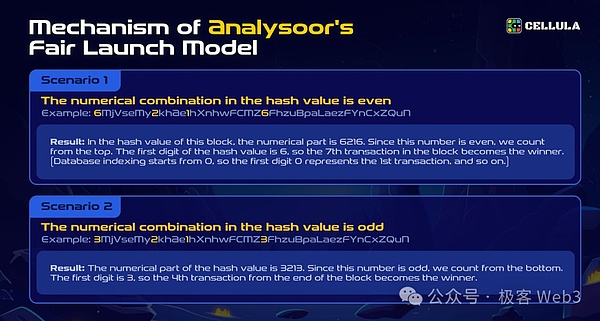
For example, in the design of Analysoor, the current block hash of BNB Chain is a long string of 6mjv…., containing 4 numbers: 6, 2, 1, 6.According to the sorting of these numbers in the string, the first number is 6 and the last number is 6, which is an even number and will be counted from front to back.The extracted numbers are counted from 0, so the transaction sorting corresponding to the number 6 is 7, so the 7th charging player is regarded as the winner from the current block.Of course, the specific design can be more flexible, here is just an example.The above random lottery algorithm can effectively motivate players to charge more and mobilize the activity of the game ecosystem.
In addition, in Cellula’s entire trading model, there is a problem: once a BitLife of a certain model is Mint out by a big boss, the BitCell combination scheme it adopts will be made public, and others can also “follow the trend” and follow the same combinationThe plan to mint BitLife will easily cause a lot of people to follow the trend, which will seriously affect the randomness of the game results.to this end,Cellula introduces variable rate progressive Dutch auctions (VRGDAs), a pricing algorithm developed by Paradigm that dynamically adjusts prices——When the casting volume exceeds expectations, the price will be raised, and when the casting volume is lower than expected, the price will be reduced.
Assume that the initial expectation is to cast 10 Class A NFTs per day, with a starting price of 1 CKB.On the 5th day, it was expected that people would cast a total of 50 Class A NFTs, but because many people followed the trend, the casting volume reached 70, which was equivalent to the original goal that was originally planned to be achieved by the 7th day.In order to limit the speed, the casting price must be quickly increased through the index pricing curve, and the unit price rises to 4 CKB to curb casting behavior.
If by the 15th day, only 120 casts were cast (the original plan was to cast a total of 150) and the expected sales volume did not reach the expected sales volume, the price will be lowered at this time to stimulate the casting volume.
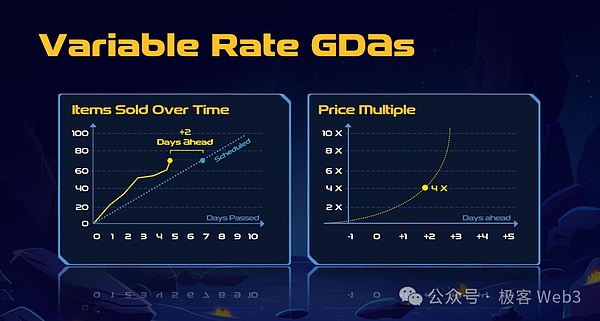
In the above scenario, when a certain type of BitLife is cast in large quantities in a short period of time, the casting price of this type of NFT will increase exponentially, and this drastic price increase can effectively prevent scientists.
Summary: Viewing Cellula from the perspective of player games
After talking about the entire core design of Cellula, we might as well look at this puzzle-breaking game mechanism from the perspective of players’ gaming.First of all, there are many participants in vPOW, and each participant has different strategies. Taking the first-level issuance market as an example, a “scientist” can write code and combine different BitCells to find BitLife with higher computing power to obtain more.High mining income, and there will be some MEV players who monitor casting events on the chain. When they find that a certain NB scientist casts a certain type of BitLife, they will also follow the trend and cast a lot.
However, due to the existence of VRGDAs exponential pricing algorithm, the price of a single type of BitLife casting can increase exponentially, which can effectively prevent scientists (anti-witches). Of course, it will also price BitLife/miner if a certain type of mining machine isIf the computing power is high, its casting/production price will also be very high. The price circulating in the secondary market will refer to the production price and then be transmitted to the entire supply chain.
Compared with the issuance process of BTC mining machines, scientists discovered that a certain type of BitLife has high computing power, just like a mining machine company developed a new chip, and MEV players followed suit to cast it, just like a first-level dealer completing the pricing of a mining machine, and then a second-levelMarket trading is similar to retail investors purchasing equipment from dealers.
The difference is that compared with the real world mining machine development, scientists have discovered that the new BitLife will be much faster, and anyone can participate in the state deduction of BitLife, which is largely equivalent to reducing the power of mining machine development.“Everyone has the opportunity to become a scientist”, which is more friendly to most people and is impossible to appear in the mining machine production chain in reality.
For the project party itself, adopting a POW-style asset distribution plan itself weakens its power, so neither scientists nor project parties nor ordinary players can unilaterally control the market.In the mining machine casting and issuance, the three parties have a game. None of them can completely monopolize the market, which can form a dynamic balance.
Overall, compared with the BTC mining machine industry chain, Cellula’s solution is a more interesting social experiment.





